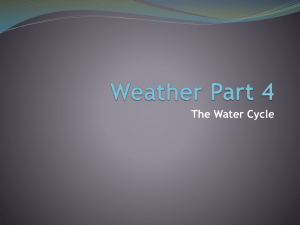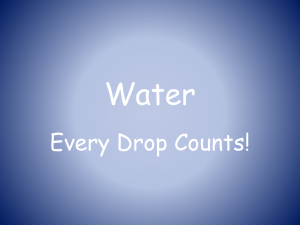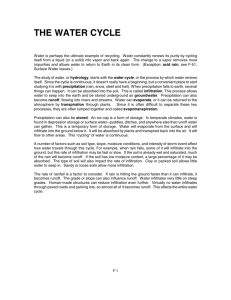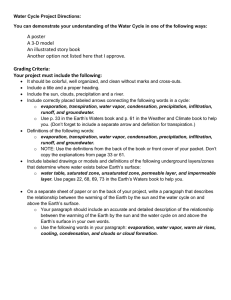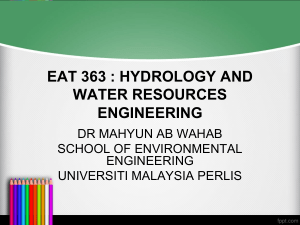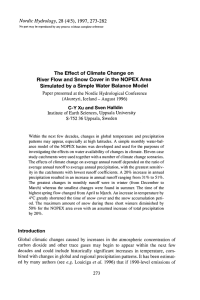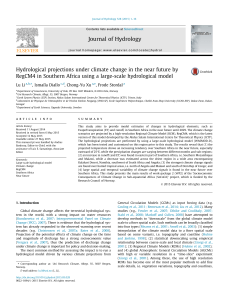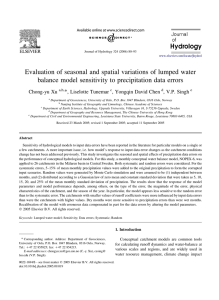The Water Cycle
advertisement
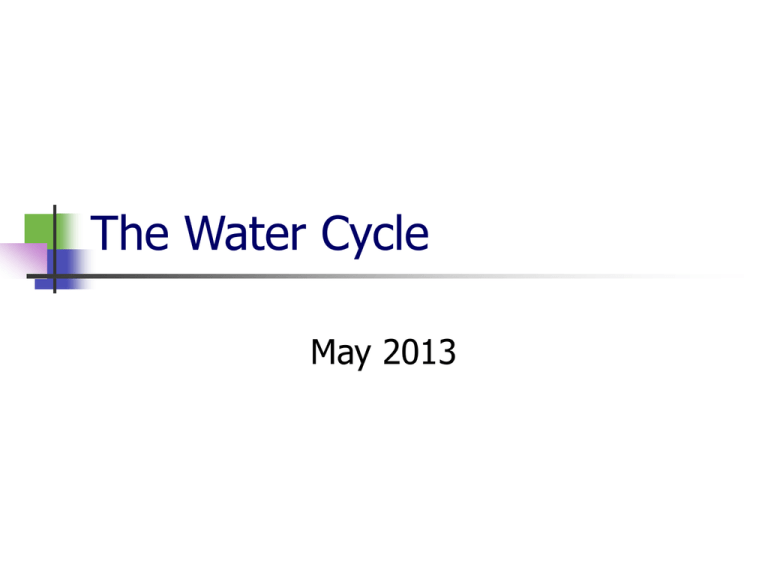
The Water Cycle May 2013 The Water Cycle There are 5 processes at work in the water cycle. Condensation Precipitation Infiltration Runoff Evapotranspiration These occur simultaneously and continuously with the exception of precipitation. The Water Cycle Water vapour condenses and forms clouds. = precipitation in suitable conditions. Precipitation infiltrates the soil or flows into the ocean as runoff. Surface water evaporates which returns moisture to the atmosphere. Plants return water to the atmosphere by transpiration. Condensation This is process of water changing from a vapour to a liquid. Water vapour in the air rises mostly by convection. As the warmer air rises, the water vapour will lose energy causing its temperature to drop. This allows the water to change state to a liquid or ice. Precipitation Precipitation is water being released from clouds as rain, sleet, hail, etc. Begins after water vapour becomes to heavy to remain in the atmospheric air and falls. Sometimes precipitation will evaporate before it hits the ground, but for the most part it reaches the Earth’s surface and adds to the Earth’s surface water. Infiltration A portion of the precipitation that reaches the Earth’s surface seeps into the ground via infiltration. The amount of water that infiltrates the soil varies with the degree of land slope, the amount and type of vegetation, soil type and rock type, and whether the soil is already saturated by the water. The more openings in the surface, the more infiltration. Water that doesn’t infiltrate is labelled as run off. Runoff Precipitation that does not infiltrate the Earth’s surface, is called runoff. Runoff can also come from melted snow and ice. When there is a lot of precipitation, soils become saturated with water and new rainfall is unable to infiltrate it. This new rainfall will become runoff. Evapotranspiration Evapotranspiration is water evaporating from the ground and transpiration by plants. This is also the way water vapour re-enters the atmosphere.
